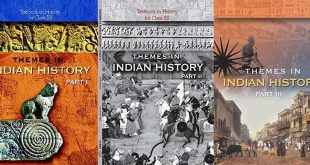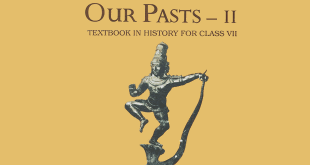Question: Discuss the early compaings of Mahatma Gandhi was he successful
in them?
Answer: The early campaigns of Mahatma Gandhi were:
- The first movement in which Gandhiji got involved was at Champarsan in Bihar in 1917. Here peasants on the indigo plantations were forced to sell indigo at Gandhiji protested against the
and forced the government increase the prices at which the plants bought indigo from the cultivators. - In 1918, Gandhiji led the workers of the textile mills in Ahmedabad against the mill-owners. Ultimately, the mill-owners had to raise the wages of the workers.
- Gandhiji also involved hems with the pleasants of Kaira (Kheda) in Gujrat this agitation forced the government to suspend tax collection because the crops had failed that year.
- Numerous mass movements were started under his leadership. They were- Peaceful demonstrations, Boycott of courts and educational institutions. Peaceful defiance of law, Non-payment of taxes and Picketing of shops selling foreign goods.
Question: Discuss the second phase of the revolutionary movement in India.
Answer: The revolutionary movement in India are as follow-
- In 1924, the revolutionary leaders formed the Hindustan Republic Association (HRA) its objective was to overthrow the British through an armed revolution.
- In 1925, a group of revolutionaries stopped a train at Kakori (in Uttar Pradesh) and took away some government money.
- In 1928, they assassinated a British police officer named sounders.
- On 8th April 1929, Bhagat Singh and Batikeshveas Dutt threw a bomb in the central Legislative Assembly the protest against the public safety bill and the arrest of 31 leaders.
- In 1930, three young revolutionaries Benay Bose, Badal Gupta and Diensh Gupta killed the inspector general of prisons.
- Surya Sen organised to Indian Republications Army. On 18th April 193 he along with some other revolutionaries attacked and occupied the police armory.
- Women also took an active part in the revolutionary movement. They acted as messengers gave shelter to the revolutionaries.
Question: Discuss Subhas Chandra Bose’s contribution to the Indian Act of
1935.
Answer: Subhas Chandra Bose’s contribution is as follows:
- In 1943, the leadership of the Azad Hind Fairly came in the hands of Subhas Chandra Bose, popularly called ‘Netaji’.
- On 21 October 1943, he declared the formation of the provisional Government of Independent India in Singapore.
- He went to the Andamans and hoisted the Indian flat there.
- In 1944, the Azad Hind Fauj attempted to enter India through the north eastern route.
- Netaji also took the help of Japan to organize an anti-British revolt. This slogan of ‘Delhi Chalo’ and ‘Jai Hind’ won many supporter to his cause under his guiance the Rani Jhansi regiment was formed which was separate women’s regiment.
Question: Write Short notes on the Khilafat Movement, the pro-changers, purna
Swaraj Resolution.
Answer: Khilafat Movement
- The Khilafat Movment was organised by the Ali Brothers- Mohammad Ali and Shaukat Ali in protest against the injustices done to Turkey (which had fought against Britian) after the first world war.
- The Khilafat leaders put pressure on the British Government to give better treatment to Turkey. Though this demand, Muslims were drawn into the National Movement in large numbers.
Pro-Changers:
- After the withdrawal of the Non-cooperation Movement, the congress was divided into two groups.
- Pro Changers- CR Das, Motilal Nehru and Vithallbhai Patel. Pro Changers wanted to end the boycott of the Legis lative councils and also enter the legislature and then make it impossible for the
government to function by opposing all its policies. - No-Changers- Vallabhbhai Patel, C Rajagopalachari and Rajendra Prasad.
Purna Swaraj Resolution:
In December 1929, the congress held its annual session at Lahore. Jawaharlal Nehru was the president of this session. In it, the congress declared ‘Purna Swaraj’ (complete Independence) as its ultimate goal it asked all congress men and nationalists to resign from the legislature and not to participate in the forthcoming elections. It was decide that 26 January would henceforth be observed as ‘Independence Day every year’
 Class Notes NCERT Solutions for CBSE Students
Class Notes NCERT Solutions for CBSE Students




